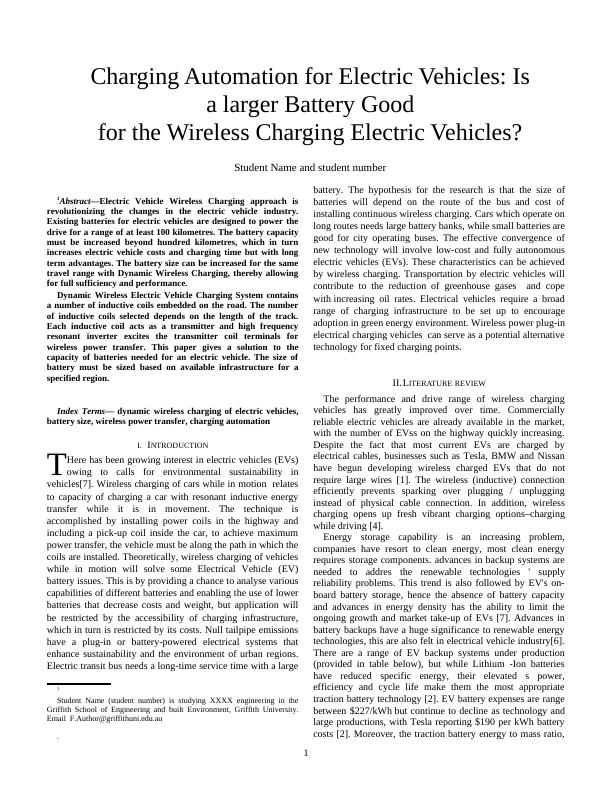Charging Automation for Electric Vehicles: Is a larger Battery
This assignment requires the student to write a research paper in the field of Engineering and Built Environment. The paper should include an abstract, figures, and tables. The student must reference all copied text, plots, equations, etc. and list them in the references. The paper should be less than 250 words and include details of the planned experiment and the benefit to humankind.
Added on 2022-10-16
About This Document
Charging Automation for Electric Vehicles: Is a larger Battery
This assignment requires the student to write a research paper in the field of Engineering and Built Environment. The paper should include an abstract, figures, and tables. The student must reference all copied text, plots, equations, etc. and list them in the references. The paper should be less than 250 words and include details of the planned experiment and the benefit to humankind.
Added on 2022-10-16
End of preview
Want to access all the pages? Upload your documents or become a member.

